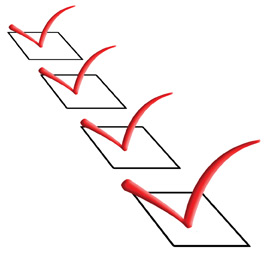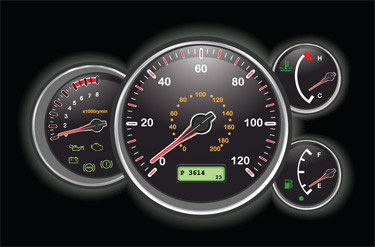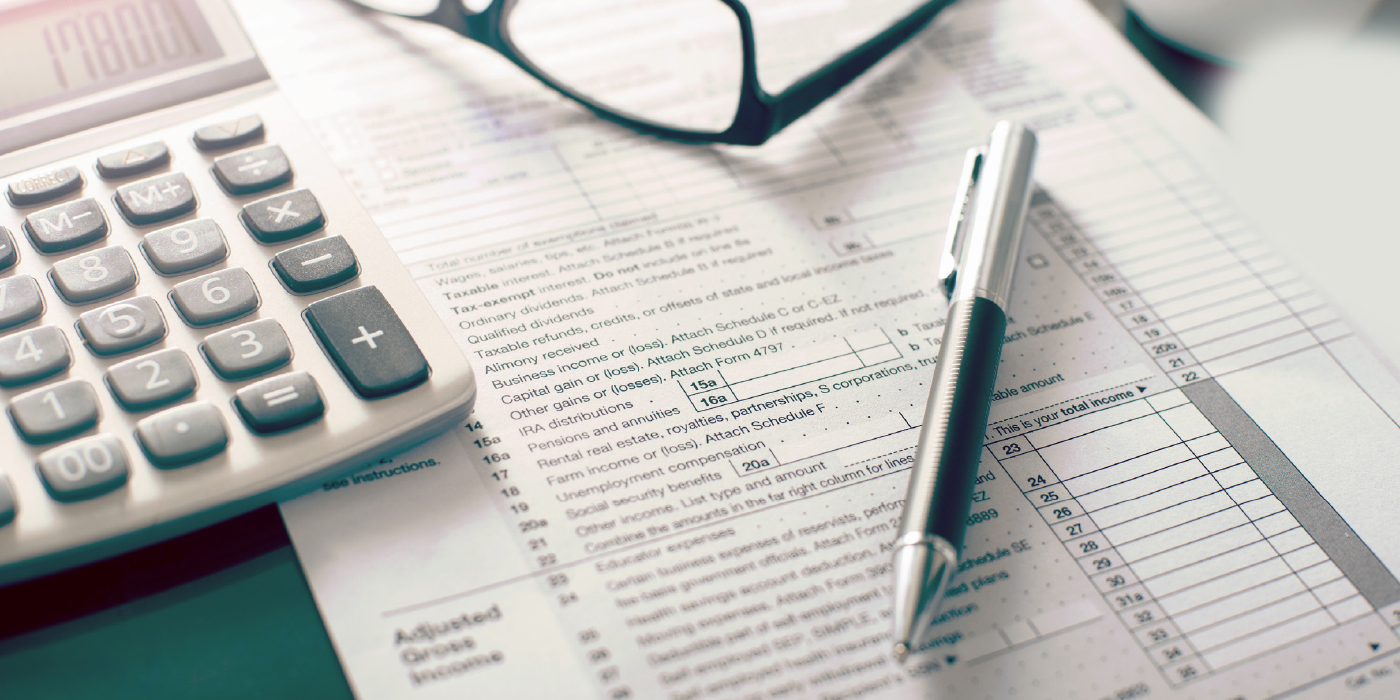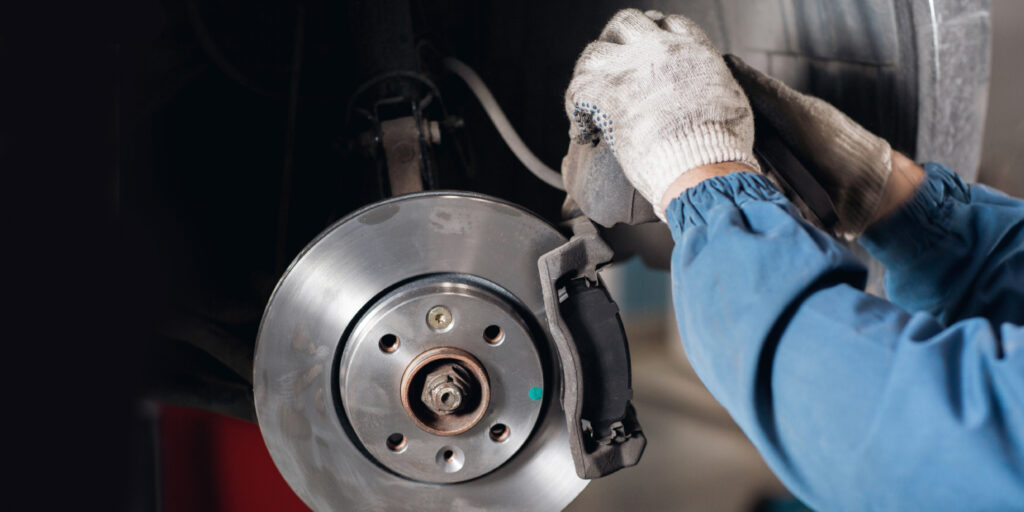by Dave Crawford
VP of Training & Program Marketing
Am-Pac/Tire Pros
 From my experience, cars and companies have a lot in common when it comes to keeping them running smoothly and achieving top performance. The owner’s manual for any business is the strategic plan that has been developed. The
From my experience, cars and companies have a lot in common when it comes to keeping them running smoothly and achieving top performance. The owner’s manual for any business is the strategic plan that has been developed. The
gauges are the financial reports that are generated on a daily, weekly, monthly, quarterly and annual basis.
Beyond those gauges should be warning lights that tell you when something needs your immediate attention. It may be a significant drop-off in car count. Perhaps inventory seems to be disappearing, or cash flow is not meeting daily operational needs and credit is being extensively utilized.
As with a car, the appearance of a warning light is often tied to a failure to follow the plan, or an ongoing lack of attention to the financial reports. In today’s harsh business environment, just as with operating a vehicle in extreme cold or heat, the failure to invest in such maintenance can have almost immediate and extremely costly consequences.
The only place a vehicle will run by itself is downhill, and the same can be said about a business. Oftentimes in business, we let things run by themselves and never take the time to perform ongoing preventive maintenance to ensure it continues to run smoothly. To start, a preventive maintenance plan for your business needs to have several elements. There needs to be daily or ongoing maintenance, a monthly analysis and a yearly review.

Daily Maintenance
Every time we drive we make certain there is gas in the tank, regularly glance at the gauges and stay alert for strange noises. We also check tire pressure on a regular basis, and even run the vehicle through a car wash from time to time.
Shop owners should follow a similar routine of daily monitoring and maintenance. Look at items such as daily car count, average repair order, repair/service sales and profit results to ensure performance is meeting the target. There will be good days and bad days, but you should be constantly looking for any trends.
Negative trends can be addressed by making modifications to the weekly advertising or its focus. Results should be posted and shared with your team. There are a lot of key items that can be looked at and, depending on your business model you should develop a short list that can be reviewed and point you in the right direction when the numbers are off.
Examine your facility the same way a commercial pilot does a walk-around before take-off. The facility needs to be kept clean — floors swept and mopped, trash emptied, bays clean, and restrooms clean and stocked.
Engage in ongoing coaching to remind your people of the need to take excellent care of your customers. Stress the importance of performing courtesy checks and recommending needed services. “Huddle meetings” with your team each morning are a great way to emphasize these points. Be quick to reinforce positive behavior, and coach those who are in need of additional direction. Make sure they stay motivated and understand the business objectives. The point of ongoing daily maintenance is to ensure that minor issues are addressed before they grow into big problems.
Develop a daily routine that is supported by a checklist. According to Dr. George Lucas, a senior associate with U.S. Learning Inc. in Memphis, most businesses that crash do so not because of a single major problem, but rather from a series of oversights that combine to create massive consequences. He says, “Some of these issues are more subjective, and others are more numbers related.

“The subjective ones mostly involve your people. In many cases, you can walk into a business and sense in just a few minutes whether there is positive or negative energy in the place. When it’s negative, there needs to be an immediate change — and that energy begins with the leader.”
For the objective issues, Lucas recommends the creation of a simple dashboard that can quickly tell you whether performance is meeting or exceeding expectations, as well as where it is lagging.
“You want one sheet that can be produced each day or week that tells you at a glance where your attention is needed,” Lucas advises. “Color-coded ones may work best, with a green, yellow and red orientation.” He also recommends that this dashboard be highly visible on an ongoing basis. “They don’t put the temperature and oil pressure gauges in the back of the headrest. You want your dashboard to be in your line of sight.
“It is not about drowning in data; instead, it is about making informed business decisions in a timely fashion. A couple of hours invested with your bookkeeper or accountant to create the proper dashboard can save you many wasted hours, put money in your pocket, and can be the ultimate key to thriving and growing your business.”
Stay tuned for the January/February issue, where we will discuss monthly and quarterly shop maintenance, as well as annual checkups.
Dave Crawford is vice president of training and program marketing for Am-Pac/Tire Pros. He previously was marketing director for American Car Care Centers. Crawford is also a contributing editor for Tire Review magazine.













I’m not a financial scholar by any means, but I know what return on investment (ROI) is. It’s a mathematical formula that yields a representation of the profitability of any type of investment. In the automotive repair industry, we primarily associate this with equipment. Admittedly, I’ve never used the term much, more often approaching things from the standpoint, “Am I making money with this or not?” As technicians and shops, our typical thought process centers on each individual job, how much time and money we have into it, so we’re used to thinking profit or loss, and also pretty good at knowing if we made money, or if we lost our “back quarters.”But over time I’ve learned that the thought process alone is not always the best approach, and making money doesn’t necessarily mean a good ROI. Even if you don’t go crazy with an exponentially long, complicated equation, if you understand the basic idea and process of calculating ROI, it can help you make good purchasing decisions. The base calculation would be dividing your net profits by the cost of the equipment. That’s your ROI. Then, if you want to take it further, you can divide that number to get a time-based ROI average.Let’s look at a basic calculation. You buy something for $10, then sell it for $14. Your profit is $4. Divide profit by investment, ($4/$10) and you get an ROI of 40%. Not bad, but if it took two years to make this profit, then your ROI would be 20% annualized, which is not as impressive. You can use this basic formula to compare products you sell as well, and it may help you decide what’s best to keep in stock or not.Now let’s try something with equipment. You have an old tire machine that’s paid for. You average one set of tires per week and it takes 1.5 hours to complete the job. You decide to buy a new tire machine that is much quicker and more efficient but it cost you $20,000. Now the same job only takes one hour. Based on the cost of technician salary, you calculate that it saves you $30 per job with this new equipment. In this case you would use the formula: savings (additional profit)/investment. At one set of tires per week, that works out to $1,560 per year. $1,560/$20,000 equals an ROI of approximately 8%. That’s not too good. It will take you almost 12 years to pay off the new machine.On the other hand, if you average five sets of tires per week, then your additional profit for the first year is $7,800. $7,800/$20,000 equals an ROI of 39%. That’s pretty good. A general rule of thumb is to pay off any piece of equipment within two to three years. This puts you right on track.But now, here is the problem. This is where we throw the proverbial wrench into the plans. Equipment is tricky. You should also calculate in installation and maintenance costs, as well as the cost of training for the new equipment, and factor in how long the equipment is going to be relevant. This is an especially important factor when considering a scan tool, the required updates and how long before it’s potentially obsolete. In the case of a tire machine, you can also calculate in savings from other benefits of a new machine, such as no more damage to wheels or tire pressure monitoring system (TPMS) sensors, which the new machine can eliminate.Some of this can be overwhelming, and it makes me realize why it’s easier just to fly by the seat of your pants and wonder, “Am I making money or not?” It’s an important business aspect, however, to know what is behind the idea because it can benefit you in so many ways. Even without math, you can almost visualize the numbers in your head.I’ll try it by leaving the formulas out to decide whether it makes sense to buy a dedicated TPMS tool when you already have a full-function scan tool with TPMS ability.If you get a TPMS problem every day and you use your full-function scan tool to diagnose it, most likely it takes much longer to boot and longer to navigate to the function. Even then, it may not cover all you need. Because there’s such a vast amount of information that a full-function scan tool has, it simply takes more for the manufacturer to keep everything current. Plus, you often must still rely on service information for certain procedures and then, if it’s the only scan tool for your shop, it ties it up for use in other diagnostics.Now, let’s compare that to a dedicated TPMS tool. Built with only one function in mind, they can make the process much quicker, have greater coverage, boot quicker and quickly walk you through all steps of any required TPMS resets. When you factor in the savings in time and the fact that your primary scan tool isn’t tied up, you can prove the value of a dedicated TPMS tool through ROI calculations. On the other hand, if you rarely work on TPMS systems, you can prove it wouldn’t make sense at all, since you do have the function on your primary scan tool.While you haven’t done any calculations, you’ve thought of it in that manner and can picture where the calculations might end up. If you’re on the fence, the math will give you the answer. Ultimately, your accountant could take the idea even further, with an undoubtedly more advanced knowledge of ROI, and almost certainly a way to calculate depreciation into the formula. That’s where I sign off, but you get the idea. It’s a great concept that represents fundamental business financials.